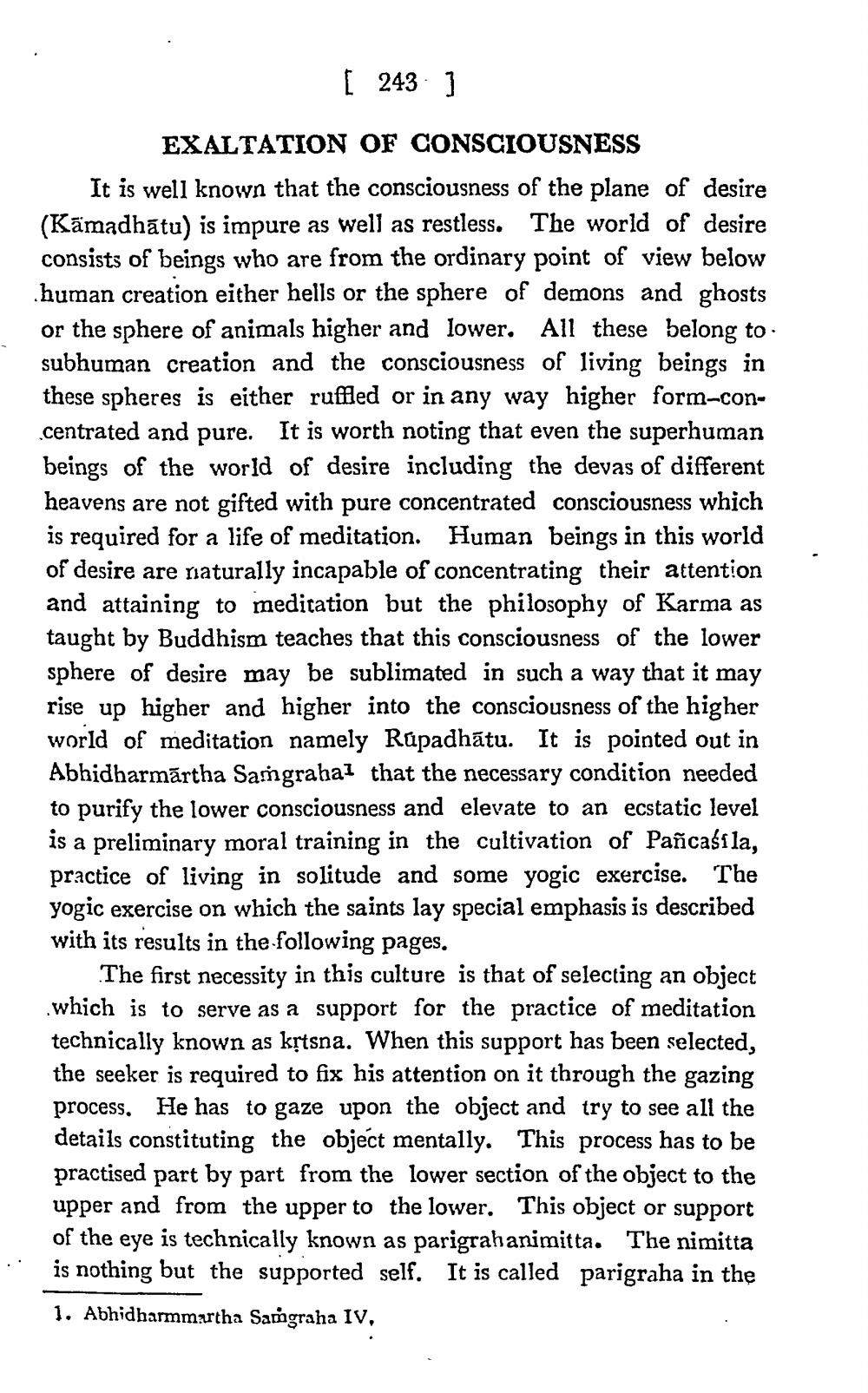________________
[ 243 ]
EXALTATION OF CONSCIOUSNESS It is well known that the consciousness of the plane of desire (Kāmadhātu) is impure as well as restless. The world of desire consists of beings who are from the ordinary point of view below human creation either hells or the sphere of demons and ghosts or the sphere of animals higher and lower. All these belong to. subhuman creation and the consciousness of living beings in these spheres is either ruffled or in any way higher form-con.centrated and pure. It is worth noting that even the superhuman beings of the world of desire including the devas of different heavens are not gifted with pure concentrated consciousness which is required for a life of meditation. Human beings in this world of desire are naturally incapable of concentrating their attention and attaining to medication but the philosophy of Karma as taught by Buddhism teaches that this consciousness of the lower sphere of desire may be sublimated in such a way that it may rise up higher and higher into the consciousness of the higher world of meditation namely Rupadhātu. It is pointed out in Abhidharmārtha Samgrahal that the necessary condition needed to purify the lower consciousness and elevate to an ecstatic level is a preliminary moral training in the cultivation of Pañcasila, practice of living in solitude and some yogic exercise. The yogic exercise on which the saints lay special emphasis is described with its results in the following pages.
The first necessity in this culture is that of selecting an object which is to serve as a support for the practice of meditation technically known as krtsna. When this support has been selected, the seeker is required to fix his attention on it through the gazing process. He has to gaze upon the object and try to see all the details constituting the object mentally. This process has to be practised part by part from the lower section of the object to the upper and from the upper to the lower. This object or support of the eye is technically known as parigrahanimitta. The nimitta is nothing but the supported self. It is called parigraha in the 1. Abhidharmmartha Sangraha IV.




